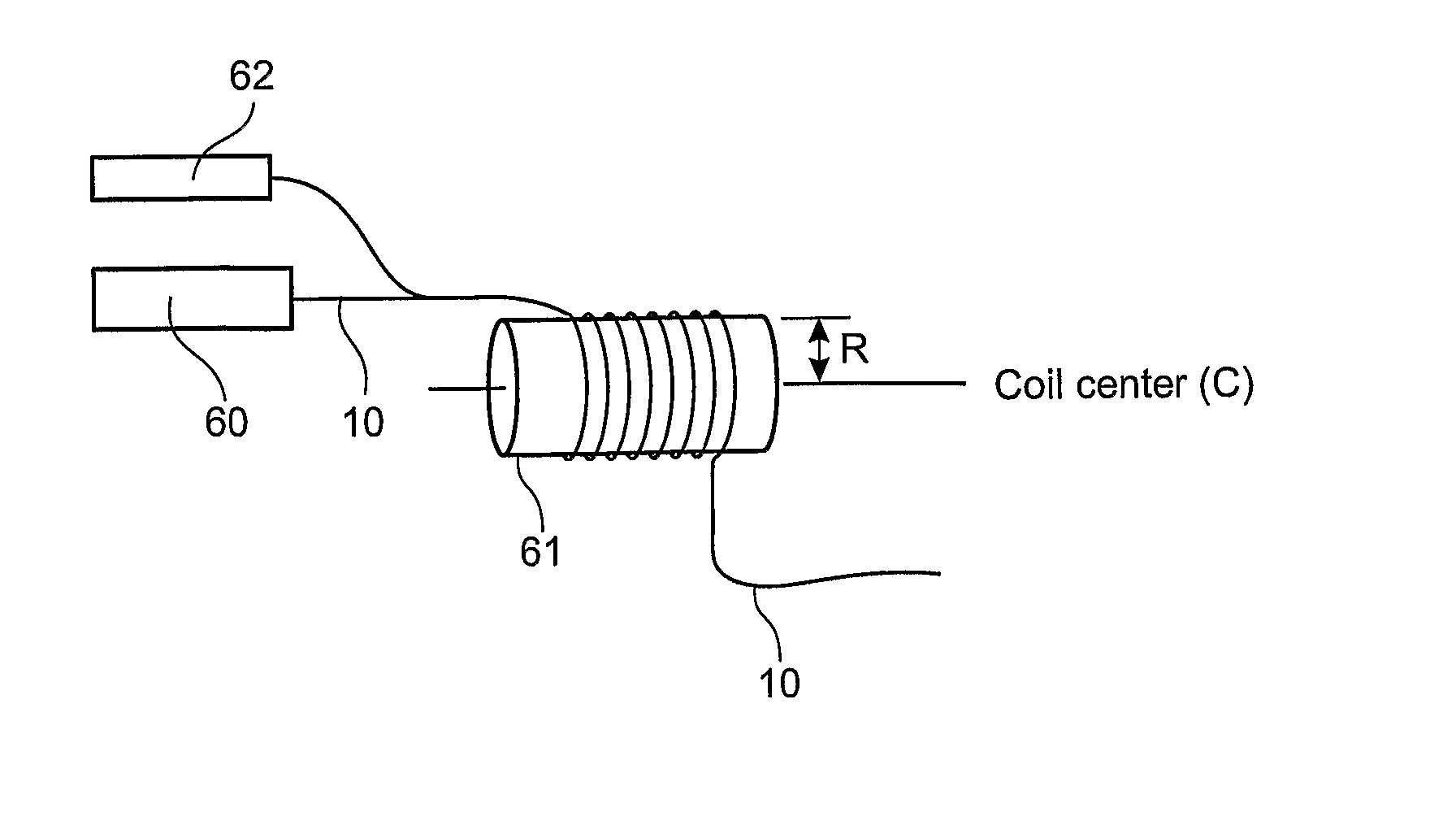Optical Fiber Gain Medium with Modal Discrimination of Amplification
a gain medium and optical fiber technology, applied in the field of optical fiber, can solve the problems of reducing beam quality, multimode operation, and limiting the achievable power of pulsed fiber lasers and amplifiers, and achieve the effect of reducing the lasing threshold, precise control and adjustment of discrimination
- Summary
- Abstract
- Description
- Claims
- Application Information
AI Technical Summary
Benefits of technology
Problems solved by technology
Method used
Image
Examples
third embodiment
[0030] The third embodiment as shown in FIG. 7 is also quite similar having a doped first core section 11, a barrier layer 12, an undoped second core section 13, and a cladding 14 all with circular cross-sections, i.e. the boundaries are circular. Here the first boundary 21, the third boundary 23 and fourth boundary 24 are concentric, but the barrier layer 12 is asymmetrically positioned around to the first core section 11, whereupon the second boundary 22 is not concentric. The bending plane P that goes through the centers of the circular first, second, third and fourth boundaries is also shown. As can be seen, the thickness of the barrier layer 12 is smallest d2min at one side of the first core section 11 and greatest d2max at the other side thereof, when measured along the bending plane P. The refractive index profile of this asymmetrical optical fiber 10 when in straight state is shown in FIG. 11A, and along the bending plane P. In the disclosed asymmetrical fibers at least the ...
fourth embodiment
[0031] Further, the fourth embodiment as shown in FIG. 8 is quite similar, too, comprising a doped first core section 11, a barrier layer 12, a second core section 13, and a cladding 14, in which fiber 10, the first core section 11, the second core section and the cladding 14 have circular cross-sections, i.e. the boundaries are circular. In this case the barrier layer 12 is symmetrically located with respect to the first core section 11, the second core section 13 and the cladding 14, more specifically the circular portion of its second boundary 22, the first boundary 21, the third boundary 23 and the fourth boundary 24 are concentric, but the second boundary 22 has a flat side 221 extending in the longitudinal direction of the fiber 10, i.e. the second boundary 23 has a cut-away segment. The bending plane P that goes through the common center of the boundaries is also shown. Just like in FIG. 7 the thickness of the barrier layer is smallest d2min the at one side of the first core ...
fifth embodiment
[0032] The fifth embodiment as shown in FIG. 9 deviates more from those embodiments discussed above. In this embodiment the optical fiber 10 comprises a doped first core section 11 with a first effective refractive index n1 and a circular first boundary 21, a barrier layer 12 with a second refractive index n2, and a circular second boundary 22, an undoped second core section 13 with a third effective refractive index n3, but having a rectangular third boundary 23, and a cladding 14 with a fourth refractive index n4 and a rectangular fourth boundary 24. The doping and undoping as well as the refractive indices are like in the other embodiments of the invention. In this case, the first core section 11 is centered and the barrier layer 12 is asymmetrically positioned like in embodiment of FIG. 7, and the bending plane P goes through the centers of their circular boundaries 21, 22. The bending plane P is arranged perpendicular to the longer widths W1a, W2a of the second core section and...
PUM
 Login to View More
Login to View More Abstract
Description
Claims
Application Information
 Login to View More
Login to View More - R&D
- Intellectual Property
- Life Sciences
- Materials
- Tech Scout
- Unparalleled Data Quality
- Higher Quality Content
- 60% Fewer Hallucinations
Browse by: Latest US Patents, China's latest patents, Technical Efficacy Thesaurus, Application Domain, Technology Topic, Popular Technical Reports.
© 2025 PatSnap. All rights reserved.Legal|Privacy policy|Modern Slavery Act Transparency Statement|Sitemap|About US| Contact US: help@patsnap.com



